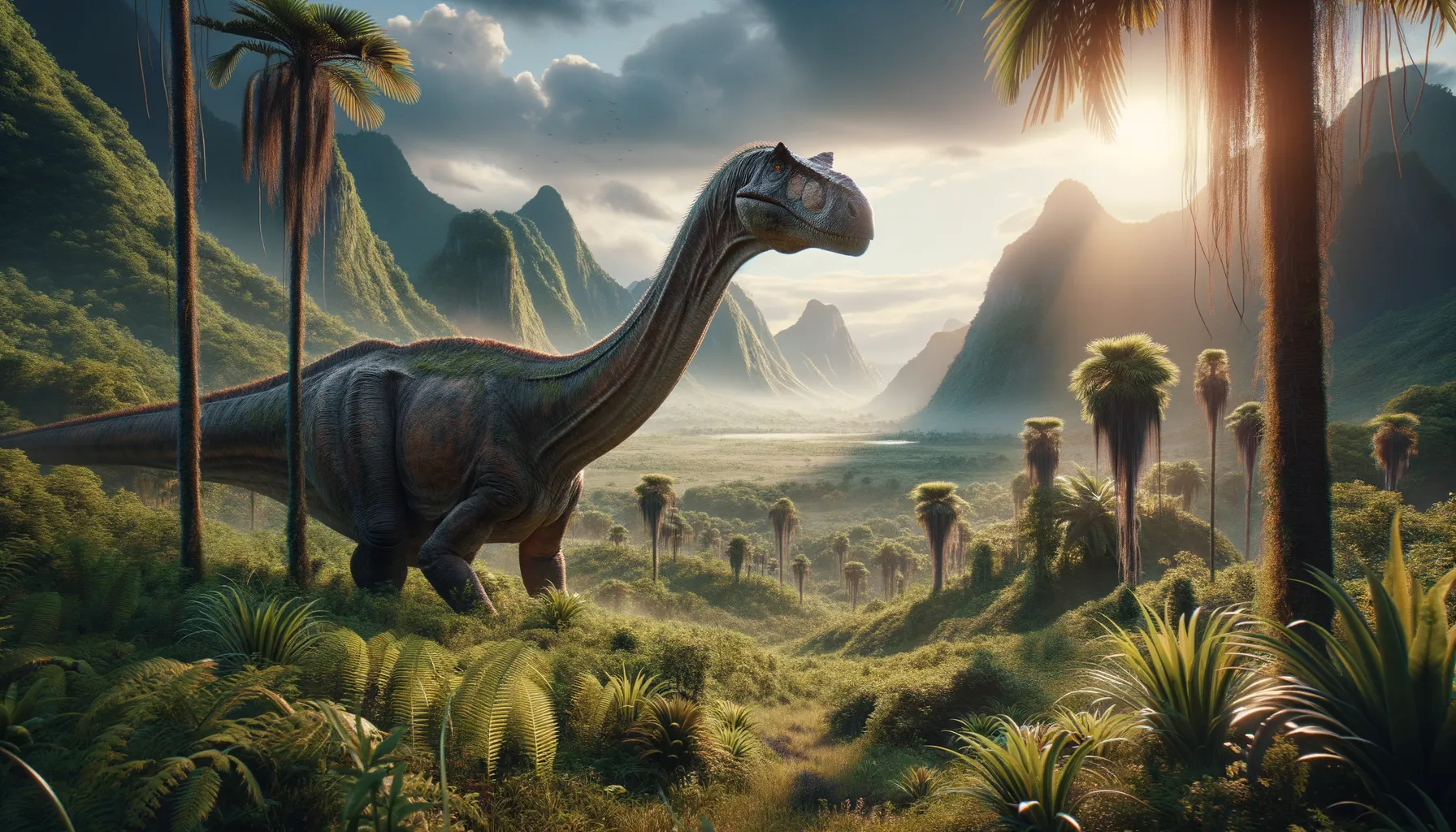
Dongbeititan
A titan of ancient Asian plains.
Period
Cretaceous
Length
Could reach lengths of up to 15 meters.
Height
Approximately 3 to 4 meters tall.
Weight
Estimated to weigh up to 17 tons.
Dongbeititan was a large sauropod dinosaur that roamed northeastern China during the Early Cretaceous period. Known for its imposing size and long neck, this herbivorous giant offers insights into the diversity of sauropods in Asia. Its fossilized remains have helped paleontologists understand more about the evolution and dispersion of giant dinosaurs across ancient ecosystems.
Diet
Dongbeititan was a herbivore, primarily feeding on plants available in its ecosystem. Its long neck allowed it to reach high vegetation, making it adept at foraging from trees and tall shrubs.
Hunting
As a herbivore, Dongbeititan did not hunt other animals. Instead, it would have spent much of its time grazing and browsing for plant material.
Environmental challenges
Survival in the Cretaceous era meant facing changing climates, including shifts in temperature and plant availability. This dinosaur needed to migrate to different areas as the seasons changed to find sufficient food sources. Predators were another challenge, requiring it to rely on its massive size for protection.
Speed
Likely slow due to its massive size.
Lifespan
Estimated to live several decades.
First discovery
Discovered in Liaoning Province, China, in 2007.
Fun Facts
- Dongbeititan was a long-necked dinosaur that lived during the Early Cretaceous period about 120 million years ago.
- The name Dongbeititan means 'Titan of Northeast China', reflecting where its fossils were first discovered.
- This dinosaur belonged to a group called sauropods, known for their enormous size, long necks, and tails.
- Dongbeititan is thought to have been a herbivore, feeding on plants and trees in its environment.
- Its fossils were found in China, highlighting the rich dinosaur history of the region.
- Dongbeititan provides important clues about the evolution and diversity of sauropods in the Cretaceous period.
Growth and Development
Dongbeititan likely hatched from eggs, similar to other sauropods. Young Dinosaurs would have experienced rapid initial growth to reach a size that deterred predators. Throughout their development, they needed a large volume of plant material to sustain their growth and weight.
Habitat
Dongbeititan inhabited open plains and possibly forested areas, where it could use its long neck to access a range of vegetation. These environments provided the necessary resources for its large size. The dinosaur thrived in regions with plenty of food and space for its herds.
Interaction with other species
As a herbivore, Dongbeititan likely coexisted with various other dinosaur species, sharing its habitat with both herbivorous and carnivorous dinosaurs. Its size and herding behavior provided a defense against potential predators. Interactions with other species would often revolve around competition for food resources.
Natural lifespan
They could live naturally for many decades, barring predation or environmental hardships.
Reproduction
Dongbeititan's reproduction likely involved laying eggs in nests, as seen in other sauropods. Breeding season would have been a critical time, requiring safe locations to lay and incubate their eggs. This reproductive strategy highlights the dinosaur's reliance on numbers to ensure survival.
Social behaviour
Dongbeititan may have lived in groups, which provided protection against predators. Herding behavior would have been beneficial for migrating across vast landscapes in search of food. Social interactions within groups could include communication through visual signals or sounds.
Fossil locations
The primary fossil sites for Dongbeititan are in Liaoning Province, China. Remains found there have been critical in understanding the diversity of sauropods in Asia. Fossils in this region are well-preserved, offering substantial data for paleontological research.
